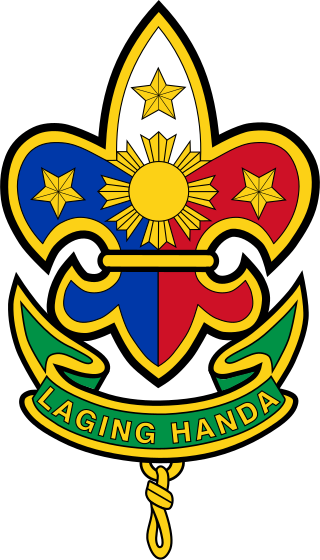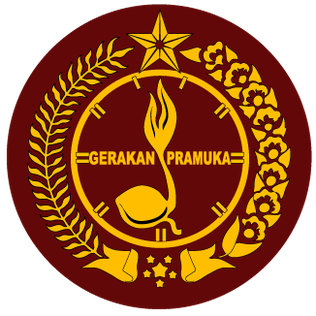
A Scout is a child, usually 10–18 years of age, participating in the worldwide Scouting movement. Because of the large age and development span, many Scouting associations have split this age group into a junior and a senior section. Scouts are organized into troops averaging 20–30 Scouts under the guidance of one or more Scout Leaders or Scoutmasters. Troops subdivide into patrols of about 6–8 Scouts and engage in outdoor and special interest activities. Troops may affiliate with local, national, and international organizations. Some national Scouting associations have special interest programs such as Air Scouts, Sea Scouts, outdoor high adventure, Scouting bands, and rider Scouts. In the USA there was around 6 million scouts in 2011.

Eagle Scout is the highest rank attainable in the Scouts BSA program by the Boy Scouts of America (BSA). Since its inception in 1911, only four percent of Scouts have earned this rank after a lengthy review process. The Eagle Scout rank has been earned by over 2.5 million youth.

Advancement and recognition in the Boy Scouts of America is a tradition dating from the inception of the Scouting movement. A fundamental purpose of advancement is the self-confidence a young man or woman acquires from his participation in Scouting. Advancement is one of the methods used in the "Aims and Methods of Scouting"– character development, citizenship training and personal fitness.

The Boy Scouts of the Philippines (BSP) is the national scouting organization of the Philippines in the World Organization of the Scout Movement. The Scout movement was first introduced in the Philippines in 1910 during the American Occupation. It was granted "Recognition as a Member Organization of the Boy Scouts International Conference with effect from October 31, 1936" by virtue of certification signed by J. S. Wilson, Olave Baden-Powell, and Daniel Spry.

Scouts Canada is a Canadian Scouting association providing programs for young people, between the ages of 5 and 26, with the stated aim "To help develop well rounded youth, better prepared for success in the world". Scouts Canada, in affiliation with the French-language Association des Scouts du Canada, is a member of the World Organization of the Scout Movement. In 2021–22, youth membership stood at 33,899, a 48% decline from 64,693 in 2014–15. Over the same period, volunteer numbers also declined 43%, from 20,717 in 2015 to 11,765 in 2022. Scouts Canada has declined significantly in size since its peak: youth membership is down 82% from 288,084 in 1965 and volunteer numbers are down 50% from 33,524 in 1965.

Malaysian Scouts Association, officially known as the Scouts Association of Malaysia, is the largest informal youth and educational organisation in Malaysia, and member of World Organization of the Scout Movement (WOSM).

Cub Scouting is part of the Scouting program of Scouting America, formerly known as Boy Scouts of America (BSA), available to boys and girls from kindergarten through fifth grade, or 5 to 10 years of age and their families. Its membership is the largest of the five main BSA divisions. Cub Scouting is part of the worldwide Scouting movement and aims to promote character development, citizenship training, personal fitness, and leadership.

The Boy Scouts of America (BSA) use uniforms and insignia to give a Scout visibility and create a level of identity within both the unit and the community. The uniform is used to promote equality while showing individual achievement. While all uniforms are similar in basic design, they do vary in color and detail to identify the different membership divisions of Cub Scouting, Scouts BSA and Venturing. Many people collect BSA insignia such as camporee and jamboree emblems, council shoulder strips and historical badges.

The Pramuka Movement of Indonesia, officially the Praja Muda Karana Scouting Movement, is the national scouting organization of Indonesia. Scouting was founded in the Dutch East Indies in 1912, and Indonesia became a member of the World Organization of the Scout Movement (WOSM) in 1953. Regulated by the Pramuka Movement Act of 2010, all elementary and secondary schools must operate a scouting program; and membership was compulsory for students in elementary and secondary schools from 2013 to 2024. It has 25.272.760 members, making it the world's largest Scout association.
Venturer Scouts, formerly Senior Scouts, and commonly known simply as Venturers, is the fourth section of Scouts Australia, and was first formed in 1946. Venturers are aged between 14.5 and 18 years of age and are organised into Units, which can be a part of a single Scout Group or a stand-alone group. Both types of Unit take Scouts from any Scout Group. Although not in common usage, the motto of the Venturer Scout section in Australia is "Look Wide".

A Scout leader or Scouter generally refers to the trained adult leader of a Scout unit. The terms used vary from country to country, over time, and with the type of unit.
Satuan Karya Pramuka (Saka) or special scout troops are the education tools, part of the Indonesian Scouting movement, to sharpen the Scouts' skills in certain fields, to build knowledge in the Information Technology (IT) field, and to answer the challenges from youth to provide advantageous activities. Satuan Karya troops are for youth age 14-25, with at least the Penggalang Terap rank, or for any person who is not a Scout, who can fulfill certain qualifications. Every troop has their own department, where each department concentrates on some special field or branch of science. In every Satuan Karya, there are special merit badges that can be obtained by fulfilling the requirements. There are nine such speciality units and these are open only to Scouts in the Rover and Venture Scout levels.
Cub Scouts is the section of Scouts Australia for boys and girls aged 8 to 11 (inclusive), often known simply as 'Cubs'. The Cub Scout section follows after Joey Scouts and is before Scouts. Cub Scouts wear a uniform shirt with navy blue panels, and yellow shoulders.

The Boy Scouts of America (BSA) was inspired by and modeled on The Boy Scouts Association, established by Robert Baden-Powell in Britain in 1908. In the early 1900s, several youth organizations were active, and many became part of the BSA.
The Ranger Award is an award available to youth in the Venturing program of the Boy Scouts of America, to encourage and recognize proficiency in skills.
The advancement program for the Scout Association of Japan is symbolized by the earning of several rank badges.
The Boy Scouts of America Centennial was a special event to celebrate its centennial that took place from September 1, 2009, through December 31, 2010. It celebrated its incorporation on February 8, 1910.

International Boy Scouts, Troop 1, Japan's first Boy Scout troop, was founded in 1911, with Clarence Griffin as Scoutmaster. Despite its early multinational character the troop's original registration was with the London headquarters of The Boy Scouts Association as "British Scouts in Foreign Countries". This initial charter was due to there being no international Boy Scout office and the "nationality requirement" that was in effect at the time. In 1918, the troop's character changed considerably when the new Scoutmaster, Bro. Joseph Janning, received approval from Lord Baden-Powell to officially reorganized the troop as a mixed-nationality, or "international", troop. B-P subsequently brought the Troop's situation before the 3rd World Scout Conference where the newly formed Boy Scouts International Bureau received approval to directly register Troop 1 and, in the future, other such "international" groups. The troop was then directly registered by the Boy Scouts International Bureau and was issued the Boy Scout movement's first "mixed nationality" charter, dated October 30, 1925, signed by Baden-Powell as Chief Scout and Hubert S. Martin as Director of the new International Bureau. Within a few years the nationality requirement was abolished and, even though the Bureau maintained the direct registration of Troop 1 and other groups already registered, new groups were requested to join the national organization of the country in which they were located and no new groups were chartered. Over the years the directly chartered groups one-by-one and for varied reasons slowly disbanded and by 1955 only Troop 1 remained. The troop has been continuously active, including war years, since its first meeting held in Yokohama, Japan on October 16, 1911, and currently consists of coed sections of Beaver Scouts, Cub Scouts, Scouts, Senior Scouts, and Veteran Scouts.

The Venturing Summit is the highest rank for youth in the Venturing program of the Boy Scouts of America. It requires Venturers to earn the Pathfinder Rank, participate in adventures, and demonstrate leadership, service and personal growth.
The emblem of the International Spirit Award is worn as a temporary patch by both youth and adult leaders in the Boy Scouts of America. The award recognizes those who have broadened their knowledge of international Scouting and increased their appreciation and awareness of different cultures and countries. This award replaces the International Activity Patch (1991-2012).














